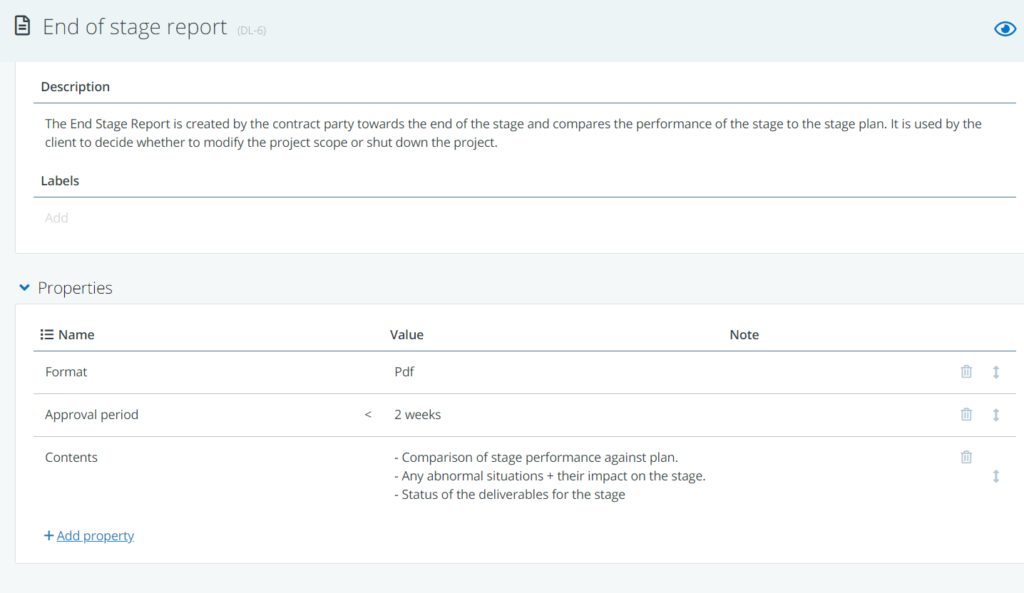In large construction projects, requirements will not only concern the built object itself, but also the processes that need to be performed by the contractor/design team to realise it (e.g. particular design tasks or engineering activities).
In addition, there are likely to be requirements concerning the deliverables that need to be produced during the project (e.g. BIM models, certificates, warranties, test reports).
Both are important as they help to create a shared understanding of what needs to be done and delivered in each phase of the project.
In BriefBuilder, there are two ‘trees’ (decompositions) available for capturing such requirements:
- a process tree (what has to be done?)
- a deliverables tree (what has to be delivered?).
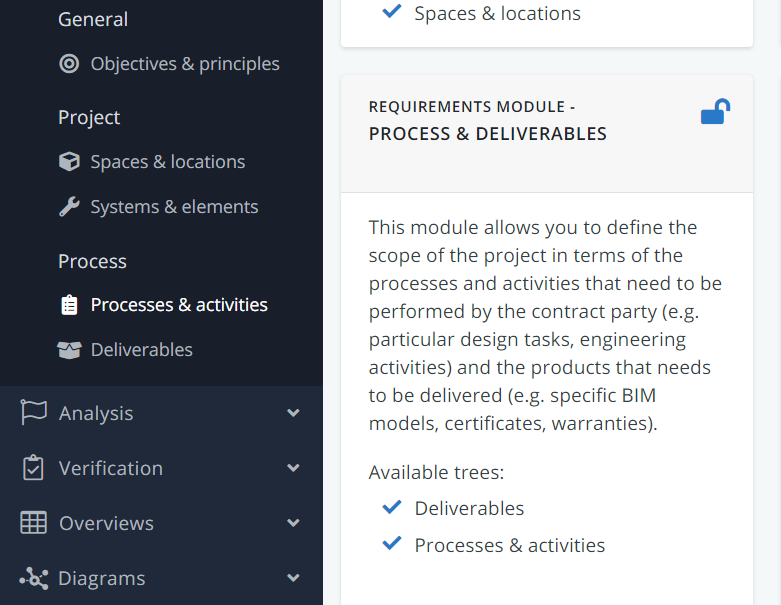
Both will be discussed below.
Processes & activities
In the process tree, you can define what processes and activities have to be done by the contract party. It consists of two types of objects:
| Process | A general process that has to be taken care of by the contractor/design team (e.g. landscape design or interior design). Can be subdivided into sub-processes or activities. | |
| Activity | A specific activity or task that has to be executed by the contractor/design team, typically with a distinct deliverable (e.g. requesting permits or doing a particular test). Lowest level of the tree. Cannot be further subdivided. |
In the tree, processes and activities can be structured according phasing or discipline or a combination of both. This can be done by using the folders (). See below for a simple example.
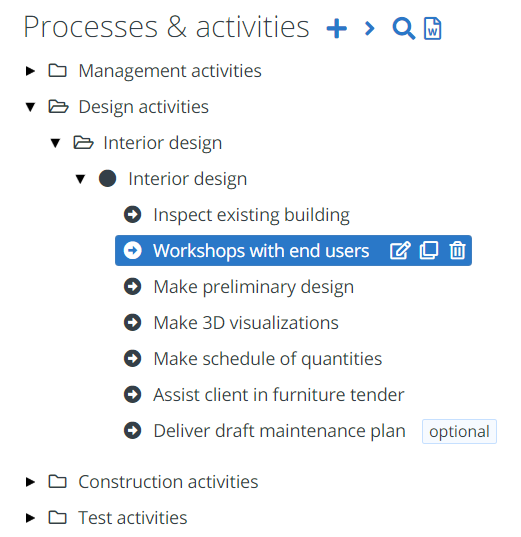
Process requirements
For each process and activity, you can define requirements concerning how or when they need to be executed.
This can be done by creating properties on the detail view of a process/activity (just click on Add property button), or by defining standard properties (via the requirements settings menu). Typical examples of such properties are:
| Frequency | How often does an activity need to be executed? |
| Start/end date | Is there a particular time frame for the activity? |
| Standards | Are there specific norms or regulations that have to be complied with? |
| Method | Is there a particular protocol or method that needs be applied? |
| Staffing | Are there requirements that apply to the people that will perform the activity (e.g. certification) ? |
| Approval | Is there a particular approval process or approval period? |
See below for a simple example of what kind of requirements a client may have formulated concerning the activity Workshops with end users.
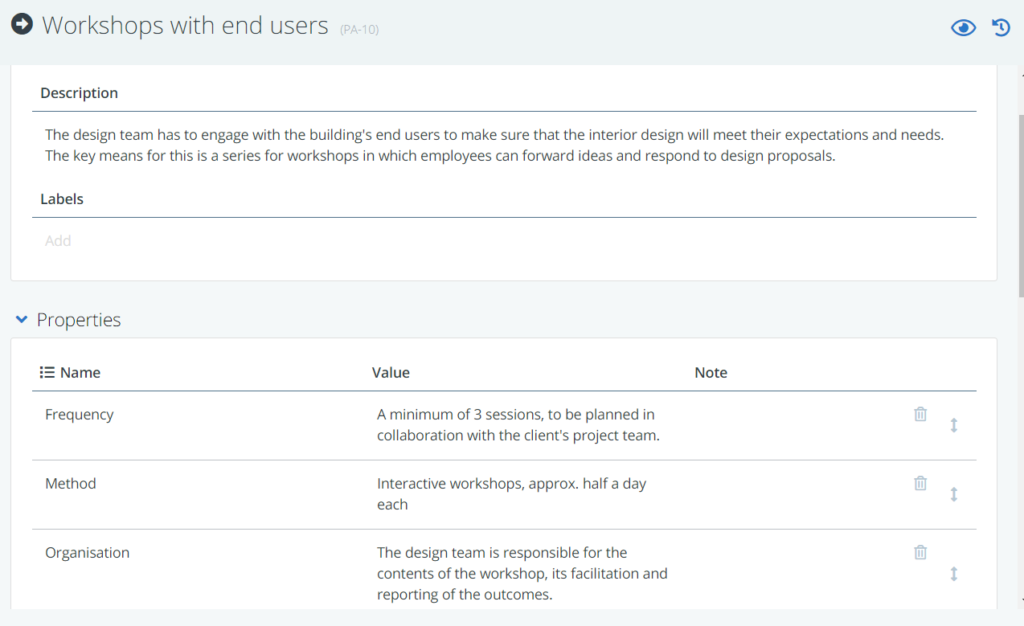
A more technical example can be seen below. It is an example of a test activity (a ‘soak test’) that is part of a commissioning process.
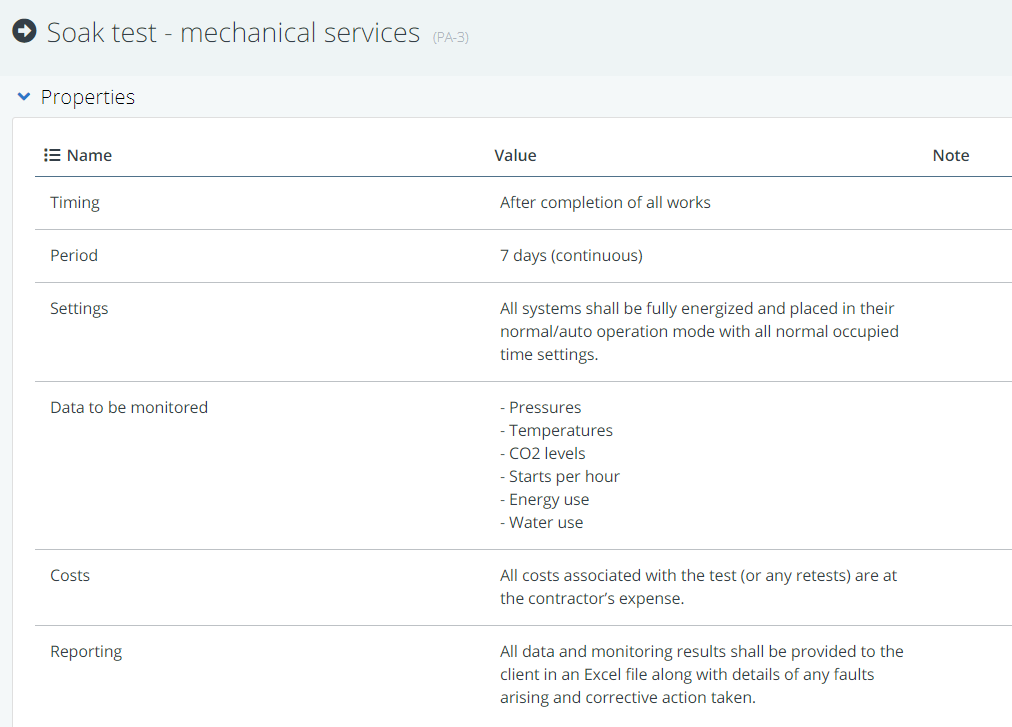
Please note that you can link activities to specific spaces or systems or elements to which they apply. In this example of the soak test, this is done in the table Relevant systems/elements. This table specifies for which systems the test has to be executed.
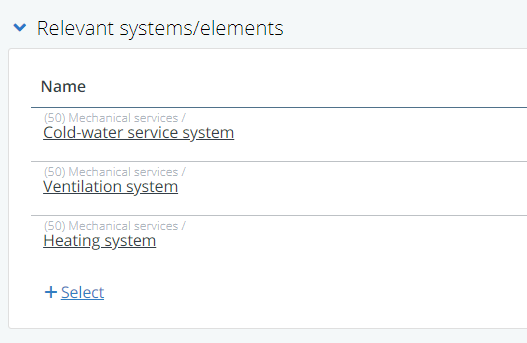
Furthermore, it is possible to link processes and activities to deliverables (see below), which are typically the outcome of an activity. This can be done in the table Deliverables.
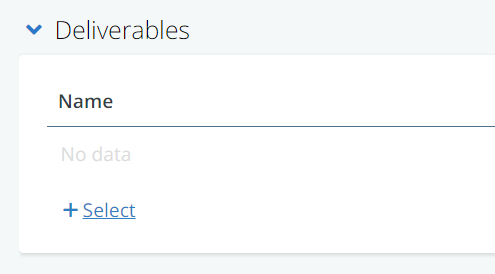
Deliverables
The deliverables tree can be used to define what kind of documentation needs to be delivered during the different project phases. Think of documents (drawings, warranties, permits, plannings documents), but also of BIM models, mock-ups or product samples.
The tree consist only of one type of object (‘deliverable’). You can use the folders () to organise the deliverables according to type, phase, or discipline. See below for a simple example.
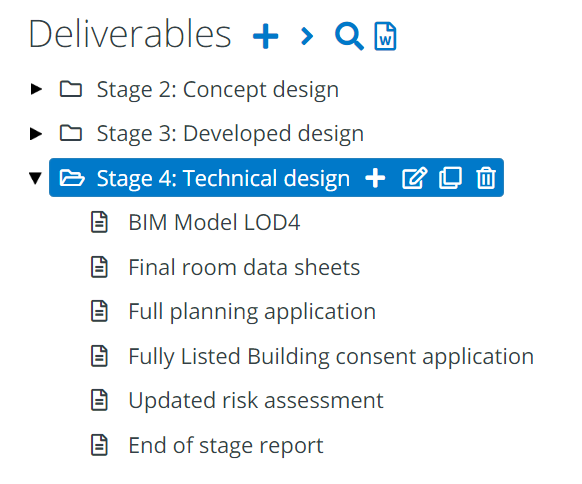
For some deliverables, you may want to add specific requirements concerning their content of format. This can be done by creating properties on the detail view of a deliverable (just click on Add property button), or by defining standard properties (via the requirements settings menu). Typical examples of such properties are:
| Format | Is there particular file/data format that is required? E.g. Pdf for documents or Ifc for designmodels. |
| Submission time | When do the deliverables have to be handed over/sent? |
| Standards | Are there specific norms or regulations that have to be complied with? |
| Contents | What needs to be in the document? |
| LOD | Is there a particular level of detail/development that is required for BIM models? |
| Approval period | How long does the construction client have to approve the material? |
See below for a simple example of requirements for an end of stage report.
